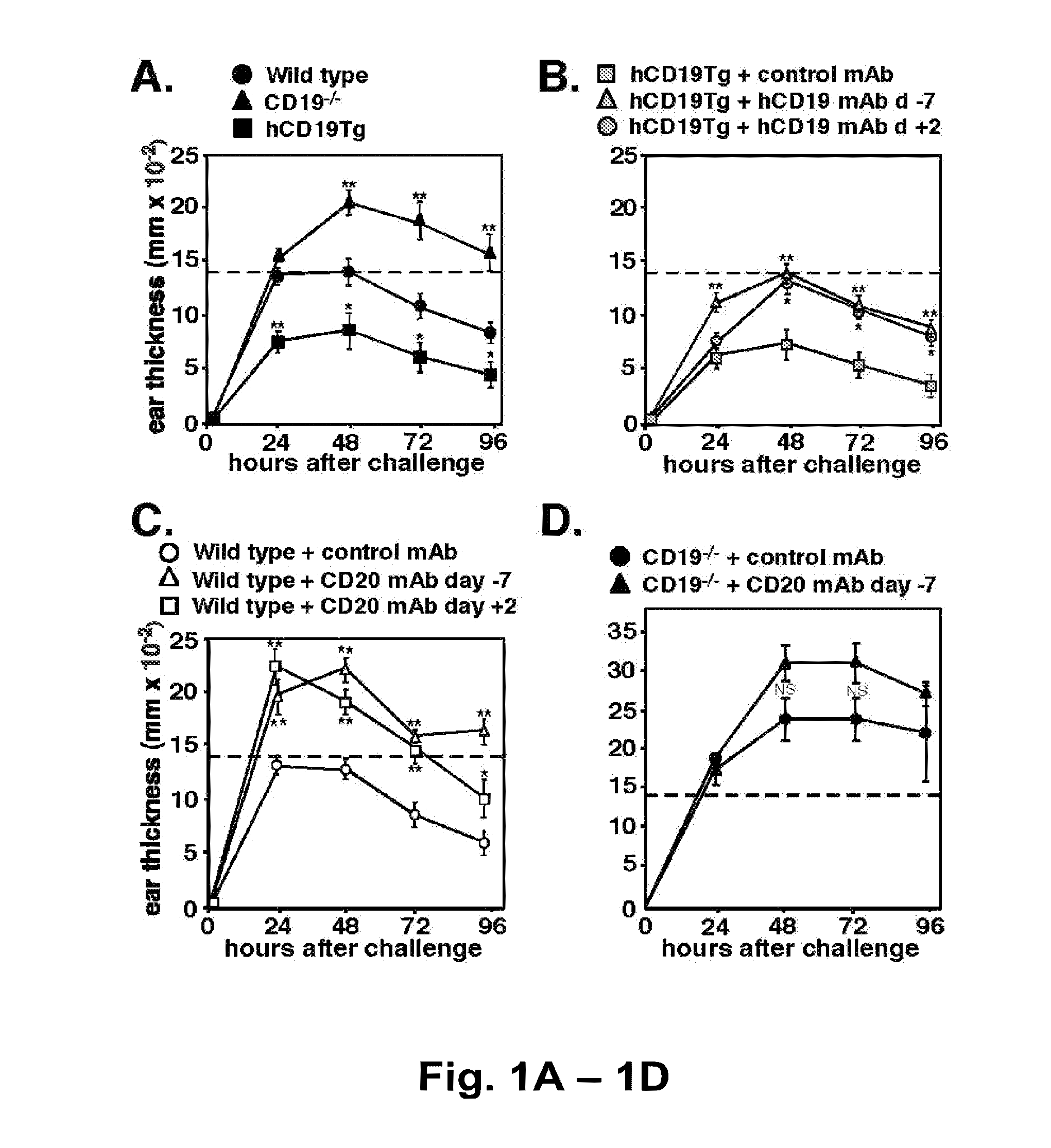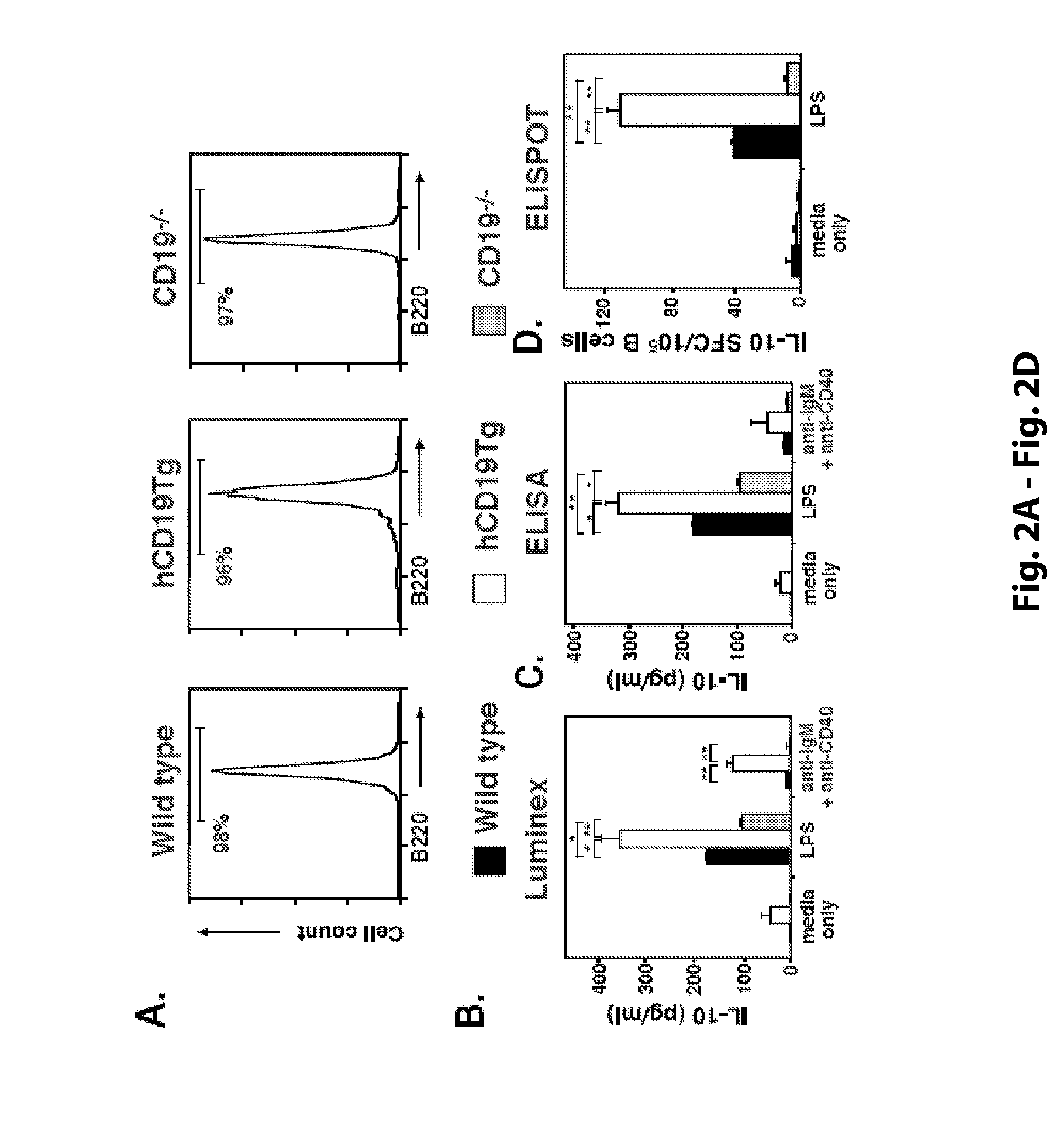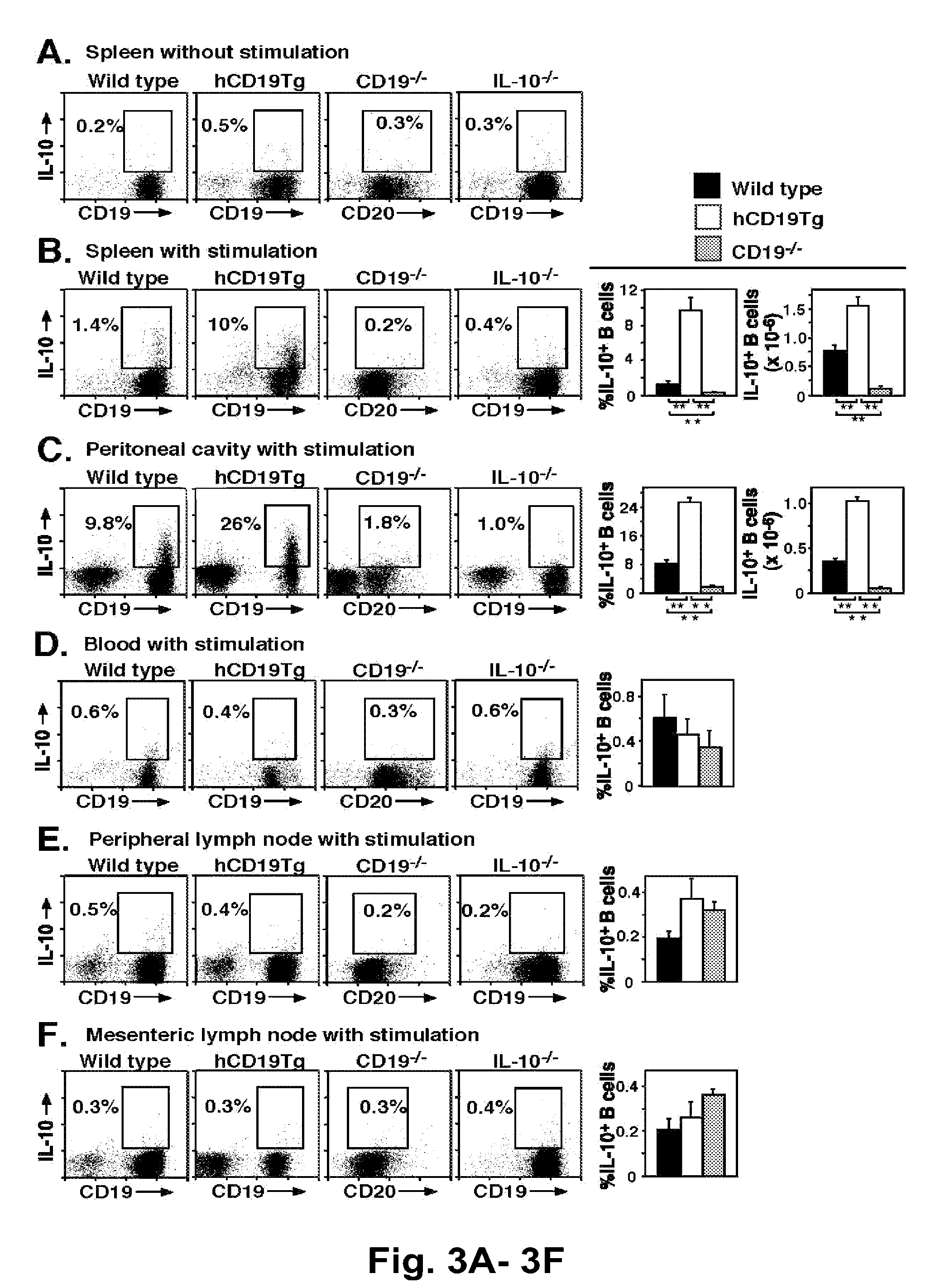Regulatory b cells and their uses
a technology of b cells and b cells, applied in the field of b cells, can solve the problems of depletion of b cells, inconvenient use, and insufficient differentiation of b cells, and achieve the effect of increasing the production of il-10
- Summary
- Abstract
- Description
- Claims
- Application Information
AI Technical Summary
Benefits of technology
Problems solved by technology
Method used
Image
Examples
example 1
6. EXAMPLE 1
A Regulatory B Cell Subset with a Unique CD1DhighCD5+ Phenotype Controls T Cell-Dependent Inflammatory Responses
[0205]B cells mediate multiple functions that influence immune and inflammatory responses. In this study, T cell-mediated inflammation was exaggerated in CD19-deficient mice and mice depleted of CD20+ B cells, while inflammation was significantly reduced in mice with hyperactivated B cells due to CD19 overexpression (hCD19Tg). These inflammatory responses were negatively regulated by a unique spleen CD1dhighCD5+ B cell subset that was absent in CD19− / − mice, represented only 1-2% of spleen B220+ cells in wild type mice, but was expanded to ˜10% of B220+ cells in hCD19Tg mice. Adoptive transfer of these spleen CD1dhighCD5+ B cells normalized the exacerbated inflammation observed in wild type mice depleted of CD20+ B cells and in CD19− / − mice. Remarkably, IL-10 production was restricted to this CD1dhighCD5+ B cell subset, with IL-10 production diminished in CD19−...
example 2
7. EXAMPLE 2
A Role for CD1DHighCD5+ Regulatory B Cells in Experimental Autoimmune Encephalomyelitis (EAE)
[0263]EAE is a T lymphocyte-mediated autoimmune disease of the CNS that models human multiple sclerosis. This example shows that B lymphocytes significantly influence EAE disease initiation and progression using mice depleted of mature B cells but with otherwise intact immune systems. Unexpectedly, B cell depletion before EAE induction significantly exacerbated disease symptoms and increased encephalitogenic T cell influx into the CNS. This resulted from the depletion of a rare splenic IL-10-producing CD1dhighCD5+ regulatory B cell subset since the adoptive transfer of these cells normalized EAE in B cell-deficient mice. By contrast, B cells were also required for CNS-autoantigen specific-CD4+ T cell generation during EAE development. Thereby, B cell depletion during EAE progression dramatically suppressed disease symptoms, impaired CNS-autoantigen specific-CD4+ T cell expansion,...
example 3
8. EXAMPLE 3
Identification of a Human Regulatory B Cell Population
[0300]A population of IL-10 producing human B cells was identified. Peripheral blood mononuclear cells (PBMC) were isolated from four healthy human donors and activated in vitro in RPMI 1640 media containing 10% fetal bovine serum (FBS), 10 μg / ml of LPS, 50 ng / ml of PMA, 500 ng / ml of ionomycin, and monensin for 5 hours. IL-10+ and IL-10− B cells were examined by immunofluorescence staining with flow cytometry analysis using cytoplasmic IL-10 expression and cell surface CD19 expression as markers for identifying the cells. A population of CD19+ B cells that produce IL-10 was identified in each of the four subjects (FIG. 14). These IL-10 producing B cells represented between 0.25 and 0.63 percent of the overall B cell population across the four donors and likely represent the human regulatory B cell counterpart to the regulatory B cell subset identified in mice, as described above.
PUM
| Property | Measurement | Unit |
|---|---|---|
| temperatures | aaaaa | aaaaa |
| temperatures | aaaaa | aaaaa |
| constant temperature | aaaaa | aaaaa |
Abstract
Description
Claims
Application Information
 Login to View More
Login to View More - R&D
- Intellectual Property
- Life Sciences
- Materials
- Tech Scout
- Unparalleled Data Quality
- Higher Quality Content
- 60% Fewer Hallucinations
Browse by: Latest US Patents, China's latest patents, Technical Efficacy Thesaurus, Application Domain, Technology Topic, Popular Technical Reports.
© 2025 PatSnap. All rights reserved.Legal|Privacy policy|Modern Slavery Act Transparency Statement|Sitemap|About US| Contact US: help@patsnap.com



